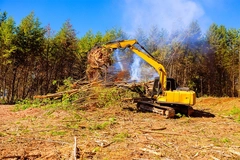
- Industry news
Industry news
- Category news
Category news
- Reports
- Key trends
- Multimedia
- Journal
- Events
- Suppliers
- Home
- Industry news
Industry news
- Category news
Category news
- Reports
- Key trends
- Multimedia
- Events
- Suppliers
Coffee shortages brewing in Brazil, climate crisis batters beans

20 Sep 2022 --- Coffee inventories in South America are declining so badly that reserves are forecast to be dangerously low. Global coffee prices are increasing and will continue to do so amid market uncertainty driven by supply shortages in Brazil. Coffee prices have been volatile in recent months, but the situation is pegged to get even worse in the weeks ahead as Brazilian coffee exports hold onto their supplies to drive up prices.
“This is occurring because we have bullish and bearish factors happening at the same time, Guilherme Morya, senior economic analyst for Rabobank, tells FoodIngredientsFirst.
“On the bullish side, we have a decline of certified stocks (at ICE-NY), weather issues and lower supply, especially from the main arabica producers, which include Brazil, Colombia and Honduras. On the bearish side, we have recession fears, war and the energy crisis in Europe, which always bring uncertainties to demand,” he explains.

A wave of persistent weather conditions is affecting coffee market dynamics in South America. Brazil faces severe dry spells as the country waits for much-needed rain. In contrast, heavy rain from La Niña weather phenomena is affecting coffee crops in Colombia.
 Coffee prices have been volatile in recent months, but the situation is pegged to get even worse in the weeks ahead.Guatemala, Honduras and Nicaragua are all dealing with adverse weather conditions.
Coffee prices have been volatile in recent months, but the situation is pegged to get even worse in the weeks ahead.Guatemala, Honduras and Nicaragua are all dealing with adverse weather conditions.
Vietnam - the second largest producer in the world after Brazil, with Robusta coffee accounting for 97% of Vietnam’s total output – is also witnessing a decline in stockpiles.
While the global appetite for robusta beans is rising, supplies from Vietnam are understood to be running low.
All this is occurring amid a landscape of food inflation that is affecting most, if not all, commodities.
More volatility in the Brazilian market
Morya says that Brazil should harvest a higher crop for the current 2022/23 crop (2022 harvest) given the on-cycle production, but the frost that occurred in 2021 reduced the output potential.
“Since March, many Brazilian producing regions faced lower rainfall, and it caused additional losses in yields (because of limiting the cherry filling), especially in Cerrado Mineiro, South of Minas Gerais and Alta Mogiana, the Northeast of São Paulo state,” he continues.
He explains that there has reportedly been a high volume of coffee held by exporters because of lower production, but also how these exporters are holding onto stocks to wait for better prices.
“It is happening because well-capitalized farmers are waiting for better prices. The local market is still understanding the amount of coffee that will be sold and what will need to be renegotiated and delivered for the next crop season.”
“In addition, the local market is focusing on the 2023/24 Brazilian crop. In August, an early flowering occurred in the South of Minas Gerais and Alta Mogiana regions which has brought an additional volatility to the market. Rainfall will be important not only for this early flowering but also for the coming flowering in Brazil. If Brazil has a good crop and experiences good weather in the coming months, it should limit coffee prices,” he explains.
However, much uncertainty and volatility are predicted for the months ahead.  Coffee giants like Starbucks, Lavazza and Costa will absorb the price hikes and pass them on to the customer.
Coffee giants like Starbucks, Lavazza and Costa will absorb the price hikes and pass them on to the customer.
“Good weather in Brazil should put a cap on coffee prices, if not, prices should go up since the global supply and demand is not comfortable.”
Climate batters coffee-growing regions: What’s next?
The rapid onset of climate change is, of course, behind the challenges being felt within the coffee industry. The climate crisis shows no sign of abating, with adverse weather threatening to endanger growing conditions further. Intense rains or prolonged dry spells make farming more difficult.
All these market dynamics lead to price spikes in coffee around the world. Coffee giants like Starbucks, Lavazza and Costa will absorb the price hikes and pass them on to the customer. Meanwhile, these brands often have sustainability initiatives working with farmers on best agricultural practices in coffee-growing regions. However, with the continued threat of Mother Nature looming heavily over the entire coffee-growing industry, finding ways to fight back against adverse weather seems beyond the reach of industry leaders.
By Gaynor Selby










